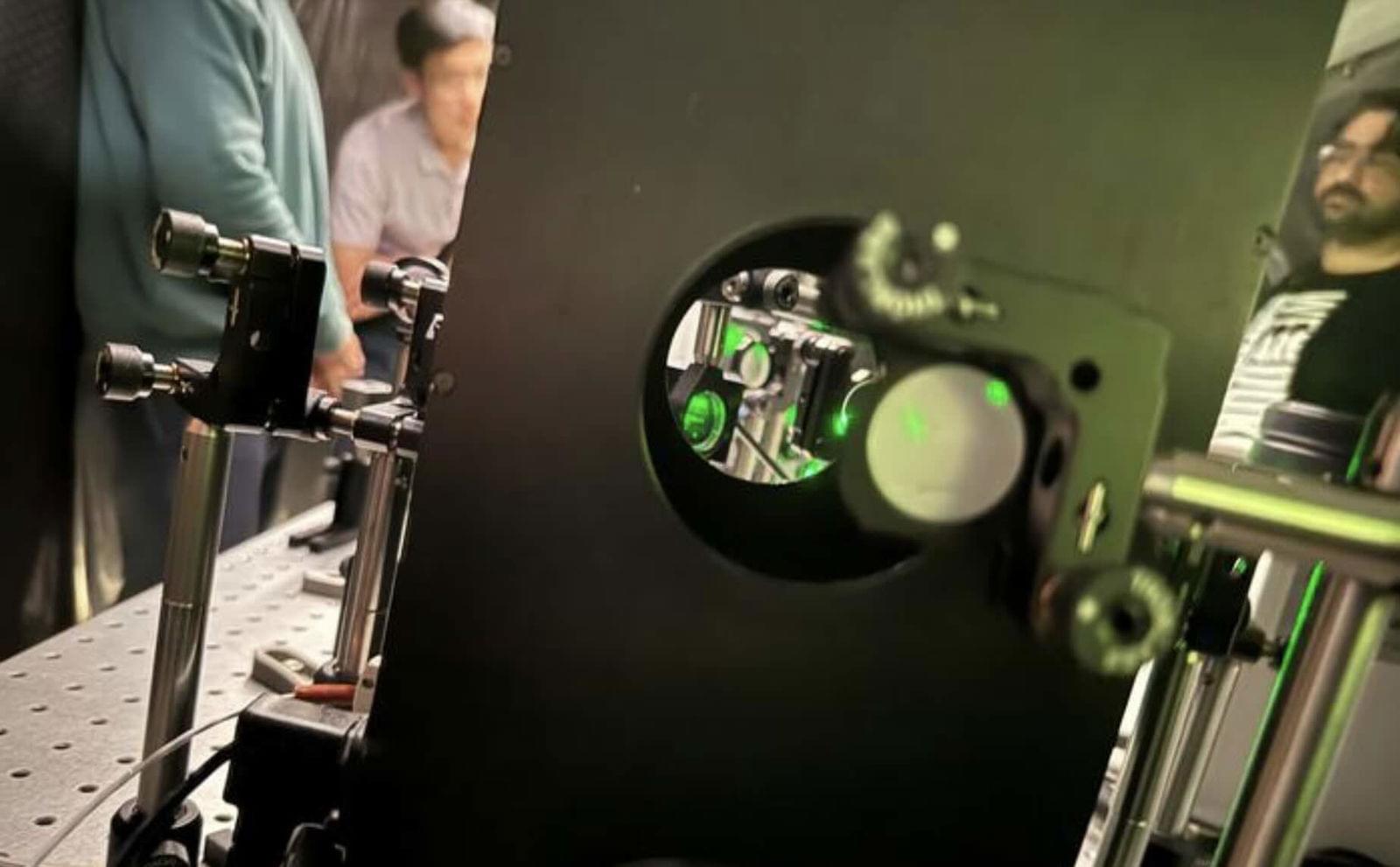Indentation in bilayer epitaxial graphene induces its reversible transformation into a diamond-like structure with stiffness and hardness comparable to diamond.




India’s space program is gaining momentum with astronaut Shubhanshu Shukla’s upcoming trip to the ISS as part of the Axiom-4 mission, marking the second Indian in space. Following this, the joint Indo-US NISAR satellite, a significant Earth observation project, is scheduled for launch in June. These missions highlight India’s growing capabilities and international collaborations in space exploration.

“In solid matter, heat is transferred both by mobile charge carriers and by vibrations of the atoms in the crystal lattice,” Garmroudi says, emphasizing that researchers have devised advanced techniques to engineer thermoelectric materials with exceptionally low thermal conductivity over the past few decades.
“In thermoelectric materials, we mainly try to suppress heat transport through the lattice vibrations, as they do not contribute to energy conversion,” he adds.
Garmroudi recalls developing the novel hybrid materials during his research stay in Tsukuba, Japan, supported by the Lions Award and carried out at the National Institute for Materials Science as part of his work at TU Wien (Vienna University of Technology).


After confirming the potential historic observation, the results were evaluated for several possible errors. The work was also analyzed independently. Each time, the team came back to the conclusion that they may have found the first potential signs of life outside our solar system.
“It was an incredible realisation seeing the results emerge and remain consistent throughout the extensive independent analyses and robustness tests,” said co-author Måns Holmberg, a researcher at the Space Telescope Science Institute in Baltimore.
Notably, the concentrations of either DMS or DMDS spotted by JWST were thousands of times higher than concentrations found on Earth. According to the Cambridge astronomers, detecting high levels of either of these chemicals on Hycean (ocean) worlds due to large amounts of biological activity was previously predicted.

Consumer electronic devices are made from materials that we have been using for more than 60 years, mainly silicon, germanium and copper. Why have semiconductor electronics become increasingly fast over this time?
I would argue that this is due to miniaturization, or the ability to stack an increasingly large number of transistors in a dense integrated circuit (microchip). Some may argue that we are starting to reach limits in that miniaturization, as thin films approach a thickness of just about 10 nanometers, or even lower.
These nearly two-dimensional (2D) materials could be used to build the next-generation electronics. However, as electronic materials like silicon are miniaturized, they become less energy efficient.
A car accident, football game, or even a bad fall can lead to a serious or fatal head injury. Annually, traumatic brain injuries (TBI) cause half a million permanent disabilities and 50,000 deaths. Monitoring pressure inside the skull is key to treating TBI and preventing long-lasting complications.
Most of these monitoring devices are large and invasive, requiring surgical emplacement. But Georgia Tech researchers have recently created a sensor smaller than a dime. The miniature size offers huge benefits.
“Surgery means extensive recovery time and can significantly impact patient health. Our system doesn’t require surgery because we use a conventional stent, the catheter, as a delivery vehicle,” said W. Hong Yeo, the Harris Saunders Jr. Endowed Professor and an associate professor in the George W. Woodruff School of Mechanical Engineering.

Georgia Tech researchers have developed an almost imperceptible microstructure brain sensor to be inserted into the minuscule spaces between hair follicles and slightly under the skin. The sensor offers high-fidelity signals and makes the continuous use of brain-computer interfaces (BCI) in everyday life possible.
BCIs create a direct communication pathway between the brain’s electrical activity and external devices such as electroencephalography devices, computers, robotic limbs, and other brain monitoring devices. Brain signals are commonly captured non-invasively with electrodes mounted on the surface of the human scalp using conductive electrode gel for optimum impedance and data quality. More invasive signal capture methods such as brain implants are possible, but this research seeks to create sensors that are both easily placed and reliably manufactured.
Hong Yeo, the Harris Saunders Jr. Professor in the George W. Woodruff School of Mechanical Engineering, combined the latest microneedle technology with his deep expertise in wearable sensor technology that may allow stable brain signal detection over long periods and easy insertion of a new painless, wearable microneedle BCI wireless sensor that fits between hair follicles. The skin placement and extremely small size of this new wireless brain interface could offer a variety of benefits over traditional gel or dry electrodes.